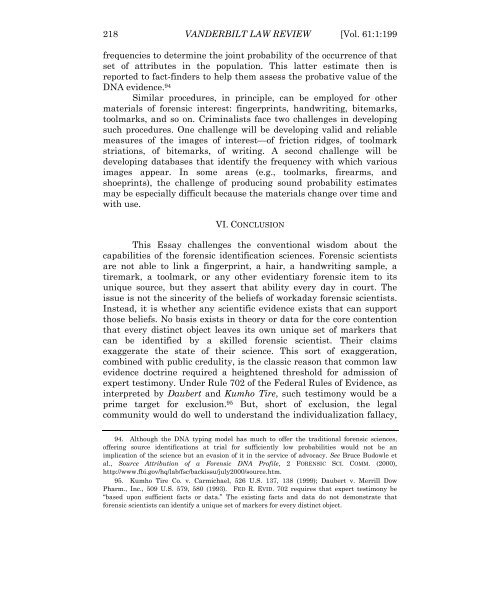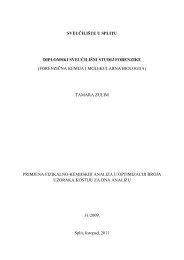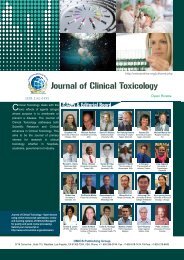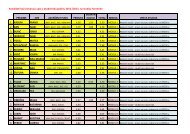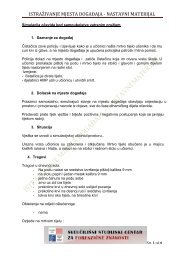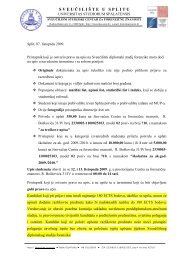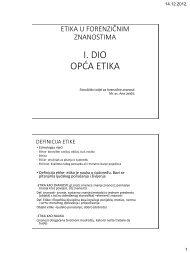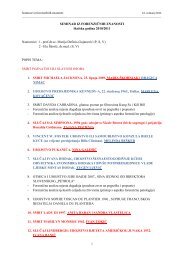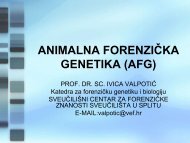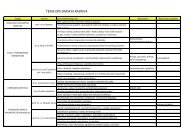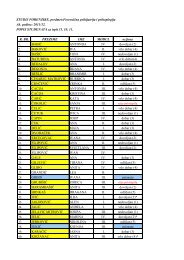The Individualization Fallacy in Forensic Science Evidence
The Individualization Fallacy in Forensic Science Evidence
The Individualization Fallacy in Forensic Science Evidence
You also want an ePaper? Increase the reach of your titles
YUMPU automatically turns print PDFs into web optimized ePapers that Google loves.
218 VANDERBILT LAW REVIEW [Vol. 61:1:199frequencies to determ<strong>in</strong>e the jo<strong>in</strong>t probability of the occurrence of thatset of attributes <strong>in</strong> the population. This latter estimate then isreported to fact-f<strong>in</strong>ders to help them assess the probative value of theDNA evidence. 94Similar procedures, <strong>in</strong> pr<strong>in</strong>ciple, can be employed for othermaterials of forensic <strong>in</strong>terest: f<strong>in</strong>gerpr<strong>in</strong>ts, handwrit<strong>in</strong>g, bitemarks,toolmarks, and so on. Crim<strong>in</strong>alists face two challenges <strong>in</strong> develop<strong>in</strong>gsuch procedures. One challenge will be develop<strong>in</strong>g valid and reliablemeasures of the images of <strong>in</strong>terest—of friction ridges, of toolmarkstriations, of bitemarks, of writ<strong>in</strong>g. A second challenge will bedevelop<strong>in</strong>g databases that identify the frequency with which variousimages appear. In some areas (e.g., toolmarks, firearms, andshoepr<strong>in</strong>ts), the challenge of produc<strong>in</strong>g sound probability estimatesmay be especially difficult because the materials change over time andwith use.VI. CONCLUSIONThis Essay challenges the conventional wisdom about thecapabilities of the forensic identification sciences. <strong>Forensic</strong> scientistsare not able to l<strong>in</strong>k a f<strong>in</strong>gerpr<strong>in</strong>t, a hair, a handwrit<strong>in</strong>g sample, atiremark, a toolmark, or any other evidentiary forensic item to itsunique source, but they assert that ability every day <strong>in</strong> court. <strong>The</strong>issue is not the s<strong>in</strong>cerity of the beliefs of workaday forensic scientists.Instead, it is whether any scientific evidence exists that can supportthose beliefs. No basis exists <strong>in</strong> theory or data for the core contentionthat every dist<strong>in</strong>ct object leaves its own unique set of markers thatcan be identified by a skilled forensic scientist. <strong>The</strong>ir claimsexaggerate the state of their science. This sort of exaggeration,comb<strong>in</strong>ed with public credulity, is the classic reason that common lawevidence doctr<strong>in</strong>e required a heightened threshold for admission ofexpert testimony. Under Rule 702 of the Federal Rules of <strong>Evidence</strong>, as<strong>in</strong>terpreted by Daubert and Kumho Tire, such testimony would be aprime target for exclusion. 95 But, short of exclusion, the legalcommunity would do well to understand the <strong>in</strong>dividualization fallacy,94. Although the DNA typ<strong>in</strong>g model has much to offer the traditional forensic sciences,offer<strong>in</strong>g source identifications at trial for sufficiently low probabilities would not be animplication of the science but an evasion of it <strong>in</strong> the service of advocacy. See Bruce Budowle etal., Source Attribution of a <strong>Forensic</strong> DNA Profile, 2 FORENSIC SCI. COMM. (2000),http://www.fbi.gov/hq/lab/fsc/backissu/july2000/source.htm.95. Kumho Tire Co. v. Carmichael, 526 U.S. 137, 138 (1999); Daubert v. Merrill DowPharm., Inc., 509 U.S. 579, 580 (1993). FED R. EVID. 702 requires that expert testimony be“based upon sufficient facts or data.” <strong>The</strong> exist<strong>in</strong>g facts and data do not demonstrate thatforensic scientists can identify a unique set of markers for every dist<strong>in</strong>ct object.


